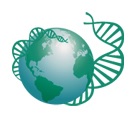What is Antibiotic Resistance and Why is it a Problem?
Antibiotic resistance occurs when an antibiotic has lost its ability to effectively control or kill bacterial growth; in other words, the bacteria are "resistant" and continue to multiply in the presence of therapeutic levels of an antibiotic.
With the discovery of antimicrobials in the 1940s, scientists prophesied the defeat of infectious diseases that had plagued humankind throughout history. However, the remarkable healing power of antibiotics invites widespread and often inappropriate use. This misuse and overuse of antibiotics leads to antibiotic resistance among bacteria and consequent treatment complications and increased healthcare costs.
Antimicrobial resistance has cast a shadow over the medical miracles we take for granted, undermining every clinical and public health programme designed to contain infectious diseases worldwide. Limited access to medical care and effective treatments, the common practice of self-medication, and the availability of counterfeit drugs have exacerbated drug resistance in the developing world. In affluent nations, infections acquired in settings such as hospitals and nursing homes are a major source of illness and death. In addition, community-acquired infections are emerging, both as independent epidemics and as primary sources of resistance in hospitals. If resistance to treatment continues to spread, our interconnected, high-tech world may find itself back in the dark ages of medicine, before today’s miracle drugs ever existed.
Timing of Market Introduction and Emergence of Resistance for Selected Drugs*
*The Race Against Drug Resistance: A Report of the Center for Global Development’s Drug Resistance Working Group



